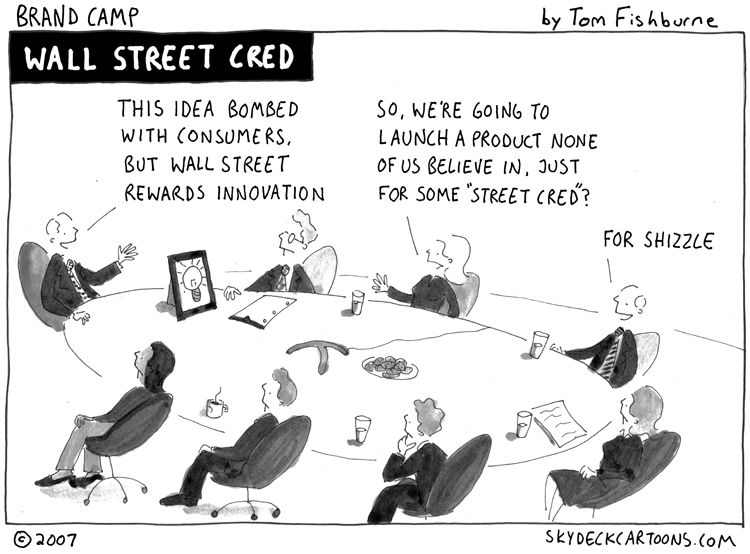marketing productivity metric
BusinessWeek’s analysis of “How HP Got Its Wow! Back” 
Apparently the new-ish head of the technology company’s PC division, Todd Bradley, has orchestrated a turnaround for the business, increasing market share 4.3 ppts and producing profit margins of 5.5% (which is huge for PCs.) One of the tactics Bradley has used is a metric called “R&D productivity.” The article explains: It measures R&D spending as a percentage of gross margin for each product line. A standard desktop computer with low margins may get one or two innovative features, while a high-end laptop with fat margins would get enough flash to make it stand out. To determine the appropriate R&D level, HP does three-year projections of expected gross margins.
This metric is credited with helping the division strike the right balance between innovation and price, with the success of HP’s new TouchSmart PC (the first touchscreen, all-in-one desktop) as an example.
So, my idea is a “marketing productivity” metric — that is, a way of determining the appropriate amount of marketing spend based on 3-year projections of expected gross margins. This would mean those products that are likely to produce the most margin would be allocated the most marketing dollars; and low-margin products would get fewer dollars.
On the one hand this approach would limit the common marketing practice of heavily promoting “loss leaders” in order to attract people to your brand, with the hopes of eventually trading them up when it comes time for them to actually make a purchase.
And in some cases, budgeting your marketing dollars according to margin projections would be a self-fulfilling prophecy — after all, how much you spend on marketing should affect the margins you generate. But your 3-year projections could be made based on normative data, thereby removing the effect of spend.
In doing so, applying a “marketing productivity” metric could be a worthwhile approach. It would take some of the subjectivity out of marketing budget allocation process, thus assuaging the concerns controllers often have about what seem to be random marketing decisions. And I would think it would improve marketing ROI (we spent more money and we made more money, assuming the projections were correct) — again something that’s sure to please company leaders.
But perhaps the biggest benefit 
In this way such integration would strengthen the company’s discipline of customer intimacy. Products would be developed with their relevance to customer needs and wants in mind from the start — vs. the more common approach of engineers and designers creating products based on technological or operational capabilities and then throwing them “over the fence” to the marketing department to figure out how to make them meaningful to customers (cartoon compliments of Tom Fishburne — check out my post on his book!)
What do you think? Do you think implementing a “marketing productivity” metric makes sense? I’m eager to hear your thoughts on pros and cons.